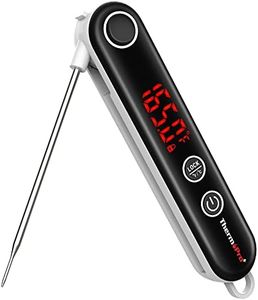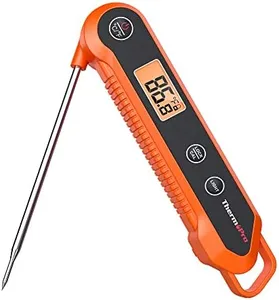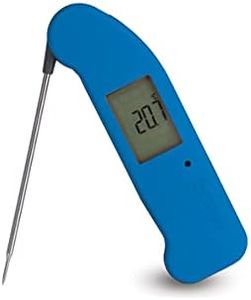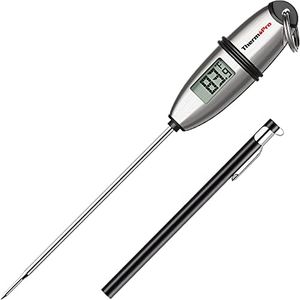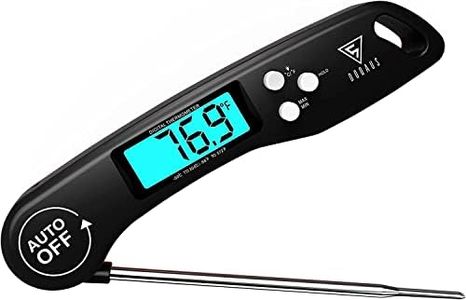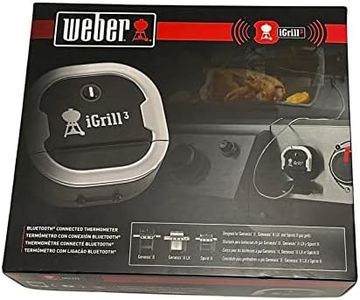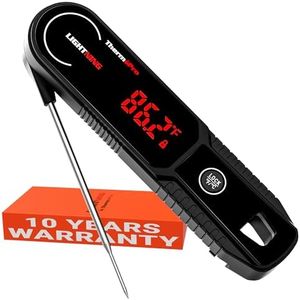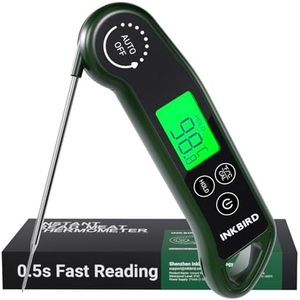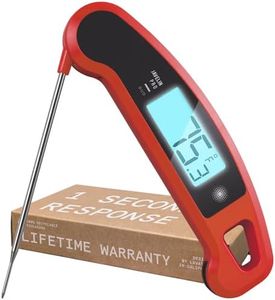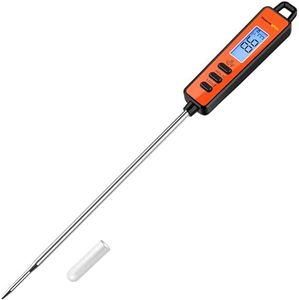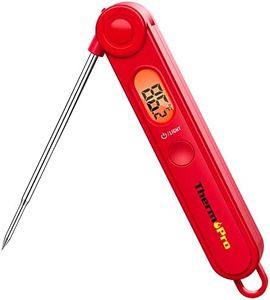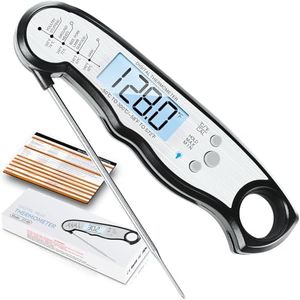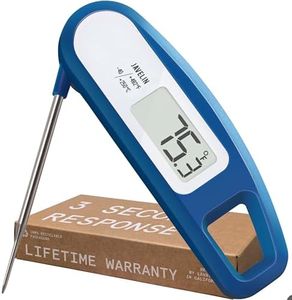We Use CookiesWe use cookies to enhance the security, performance,
functionality and for analytical and promotional activities. By continuing to browse this site you
are agreeing to our privacy policy
10 Best Instant Read Meat Thermometer
From leading brands and best sellers available on the web.Buying Guide for the Best Instant Read Meat Thermometer
Picking the right instant-read meat thermometer can make a big difference in your cooking, helping you achieve perfectly cooked meat every time. When searching for an instant-read thermometer, focus on accuracy, speed, and ease of use. Carefully considering a few key features will help you find a thermometer that matches your cooking habits and makes checking temperatures quick and reliable.Response TimeResponse time refers to how quickly the thermometer gives you a final temperature reading after being inserted into the meat. This is important because a faster response time means you spend less time with the oven or grill open and less risk of overcooking your food. Response times are usually measured in seconds. Super-fast thermometers can give readings in 2-3 seconds, average ones in about 5-7 seconds, and slower models may take 8 seconds or more. If you check temperatures often or want minimal hassle, go for a quicker response time, while those who use the thermometer occasionally might not mind waiting a few extra seconds.
AccuracyAccuracy refers to how close the thermometer's reading is to the actual temperature. This is crucial for food safety and making sure your meat is cooked just the way you want it. Most instant-read thermometers have an accuracy range of ±1°F (±0.5°C), which is ideal, while others might have a wider margin like ±2°F (±1°C). If precision is important to you, especially for specialty cuts or candy making, choose a thermometer with the smallest margin of error. For basic grilling or home cooking, a slightly larger margin may be acceptable.
Temperature RangeTemperature range is the span between the minimum and maximum temperatures the thermometer can measure. This matters if you plan to use the thermometer for more than just meat, like for candy, baking, or frying. A range from about -58°F to 572°F (-50°C to 300°C) will cover most cooking tasks, while more limited ranges may suit only meat cooking. Consider your intended uses: if you'll use it for grilling, baking, and candy, look for a broad range; if only for basic roasts or steaks, a smaller range will do.
DisplayThe display is where you read the temperature, and its size, clarity, and readability are important, especially in dim lighting or at tricky angles. Some thermometers have backlit displays or large digits for easy reading. If you mostly cook indoors or in good lighting, a standard display might suffice, but if you grill outside at night or have vision issues, look for a bright, easy-to-read screen.
Probe Length and MaterialThe probe is the pointed part that goes into the food, and its length and material affect both ease and safety. A longer probe keeps your hand farther from heat, which is great for grilling or thick cuts, while a shorter probe is easier to store and ideal for thinner cuts. Stainless steel is the preferred material for safety and easy cleaning. Choose a length that matches the type of food you often cook: longer for big roasts and grilling, shorter for everyday kitchen tasks.
Durability and Water ResistanceDurability and water resistance help make the thermometer last, especially if you use it often or in outdoor settings. Some thermometers are water-resistant or waterproof, meaning they can handle occasional splashes or even be washed under running water. If you plan to use the thermometer near a grill or outdoors, or want easy cleaning, pick a model with higher water resistance. For occasional or indoor use, this feature might not be as important.
